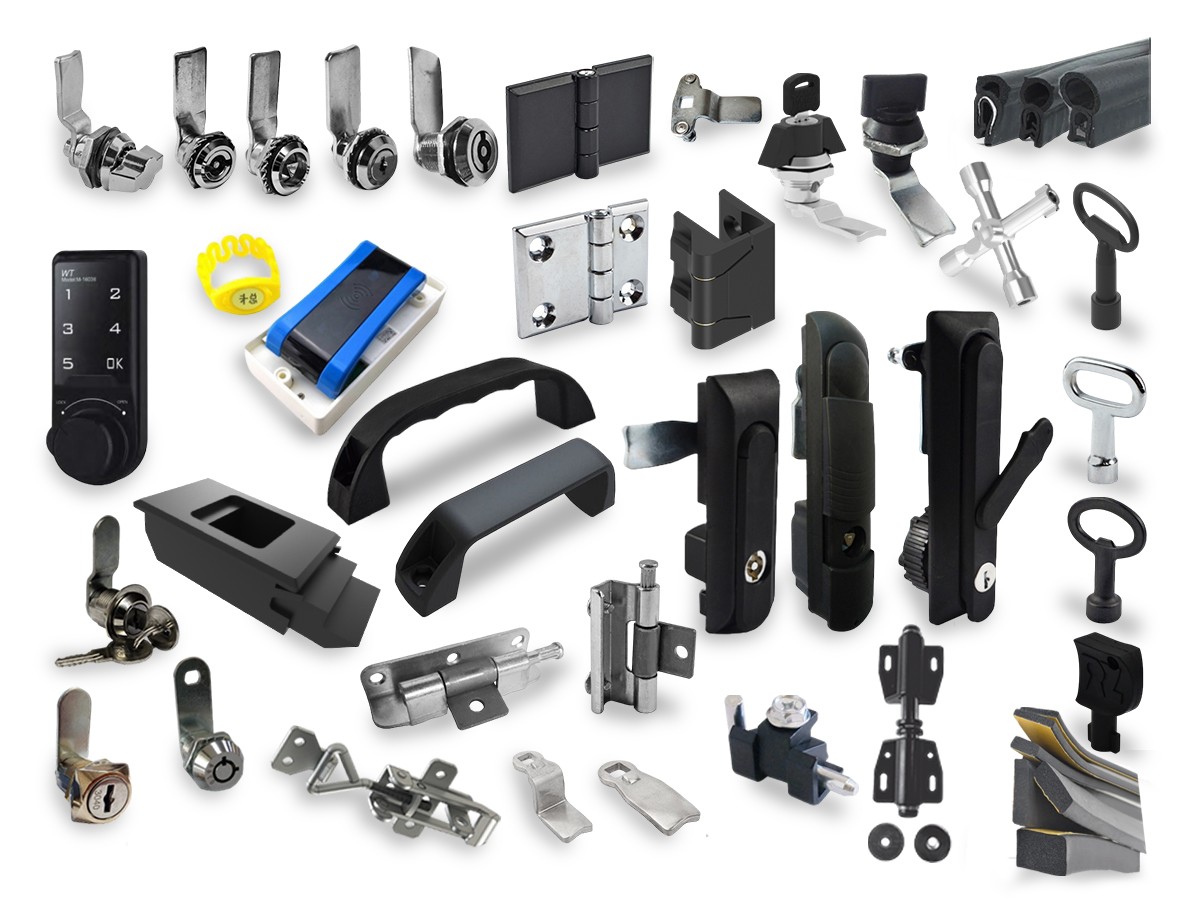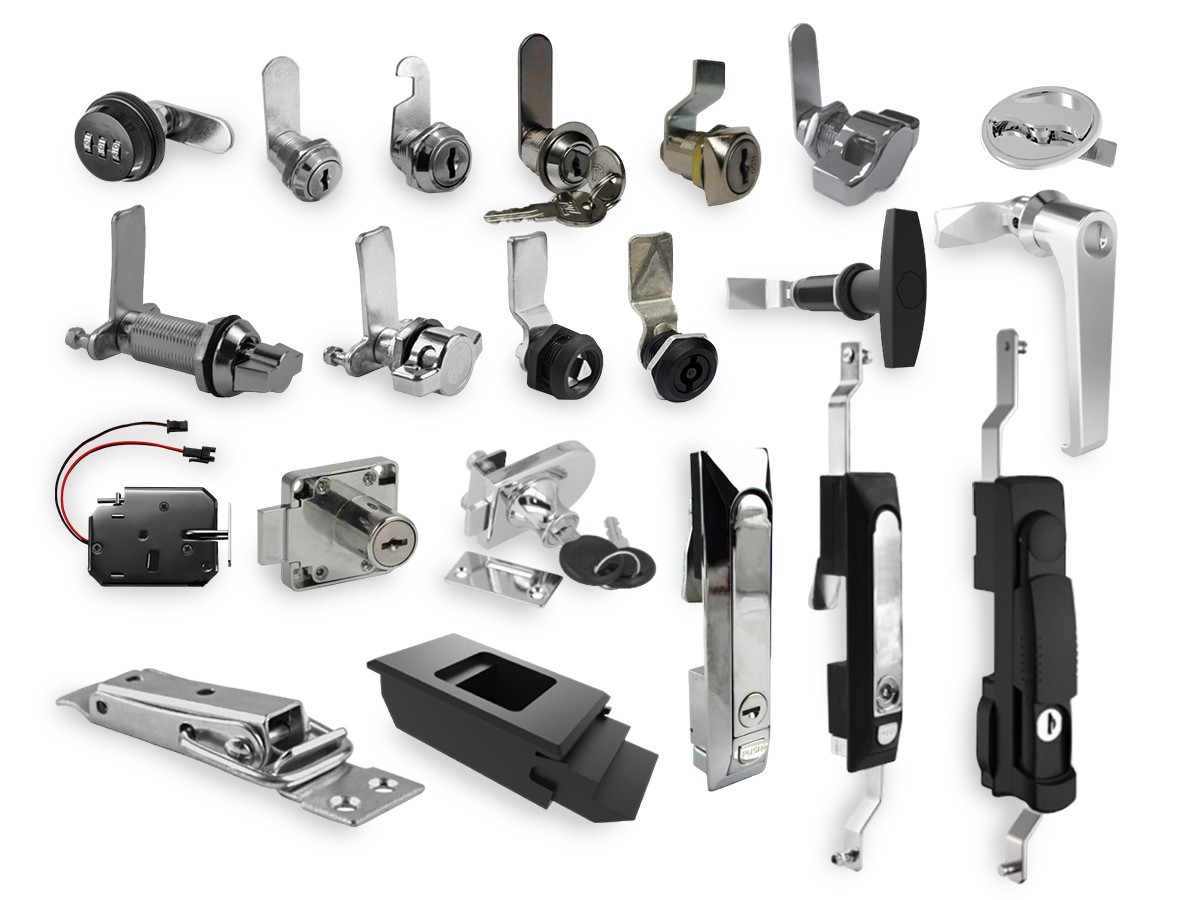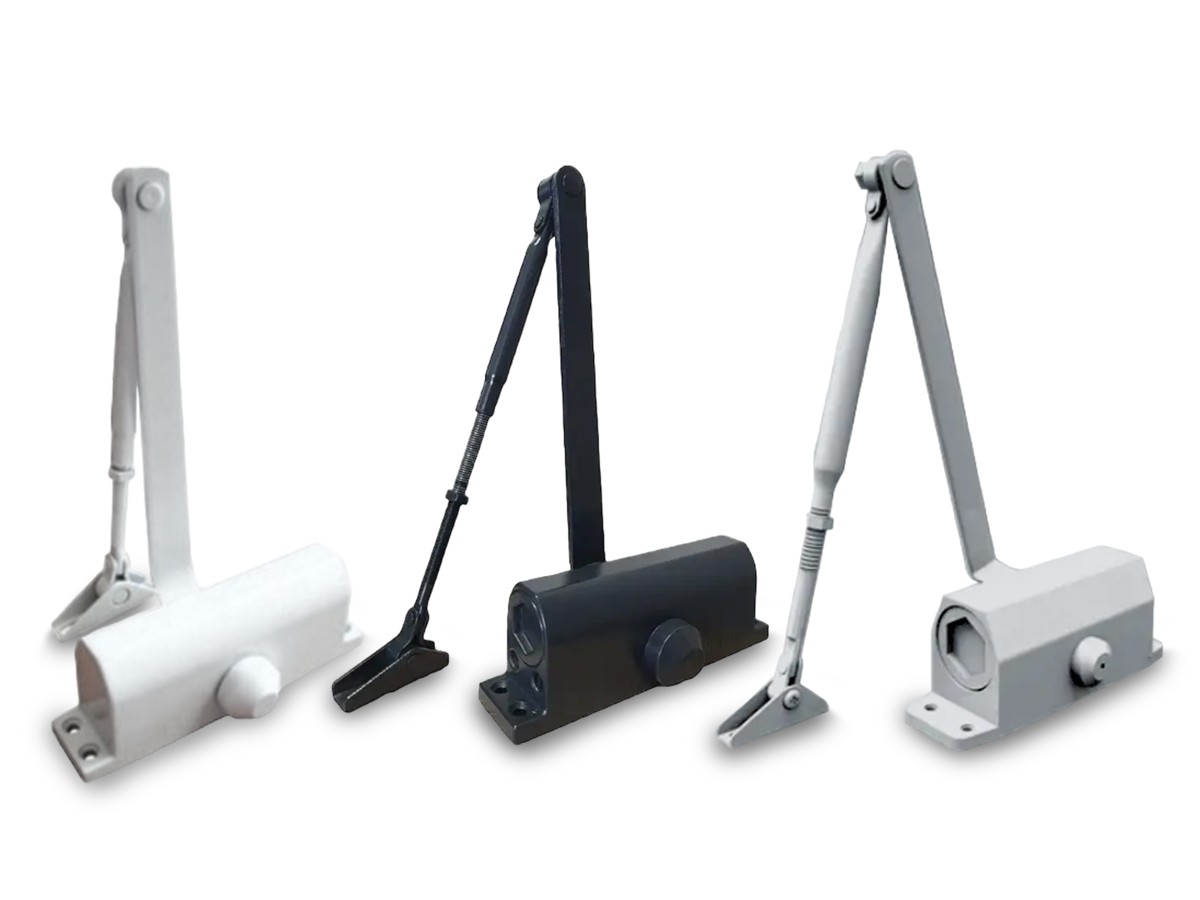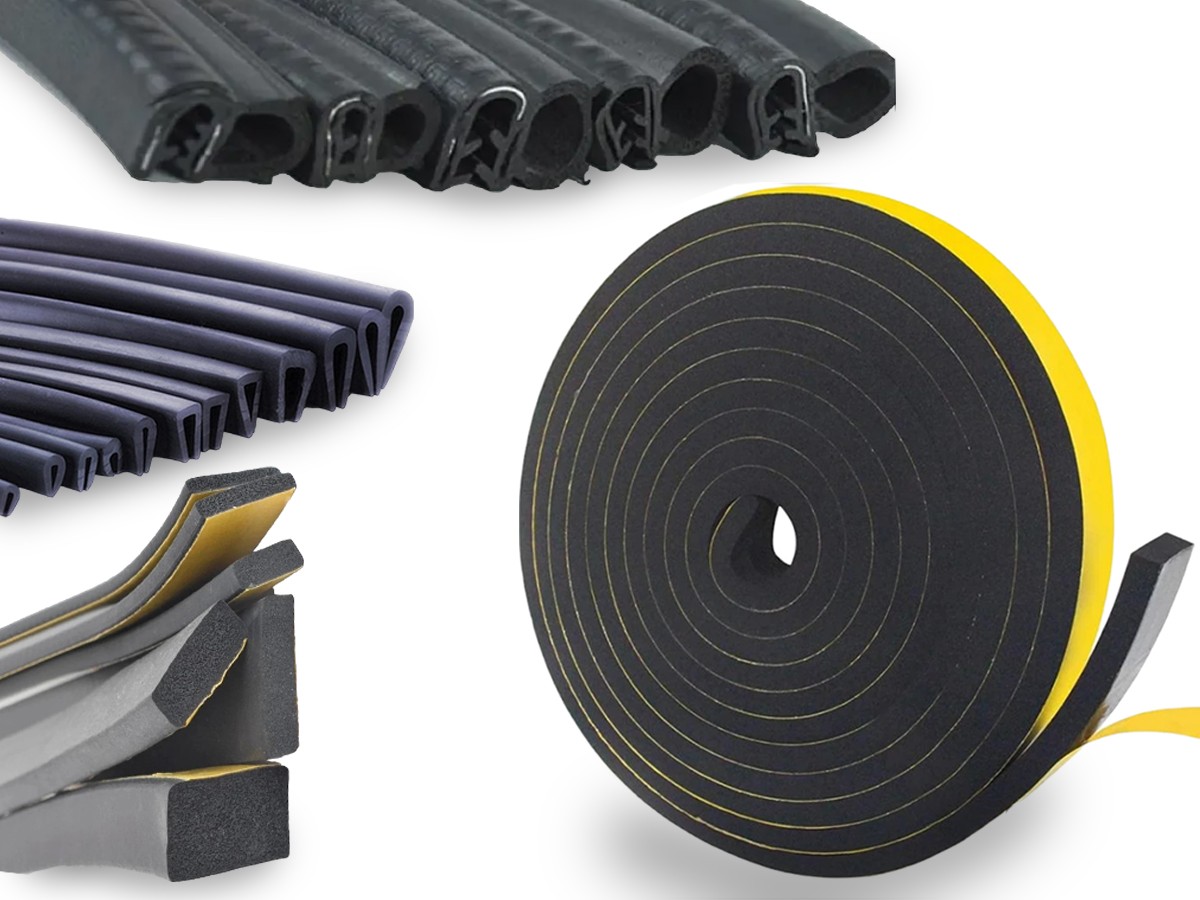Industrial door hardware: main types and selection tips
Contents
Purpose of industrial door hardware
Main types of door hardware
Handles
Locks and locking systems
Hinges
Door closers
Seals
Factors influencing the choice of door hardware
Material quality
Style and design
Degree of safety
Practical tips for selecting door hardware in the industry
Researching the requirements of the door
Consider functionality
Budget and affordability
Popular questions about hardware installation and maintenance
How do I properly install door hardware?
What is the regular maintenance of door hardware?
Purpose of industrial door hardware
Industrial door hardware is a range of auxiliary elements and components that are mounted on industrial furniture doors and equipment. The main purpose of these products is to ensure the safe and efficient operation of doors in an industrial environment.
 Industrial door hardware
Industrial door hardware
Unlike ordinary, or household door hardware, these products must meet the harsh conditions of use in industry. Therefore, they have increased strength, durability, resistance to aggressive environments, atmospheric phenomena, etc.
The main types of door hardware
For the needs of industry, the following types of door hardware are produced: hinges, handles, locks, seals, accessories, etc. Let's dwell on them in detail.
Handles
Industrial handles are designed for comfortable and reliable opening and closing of doors. Various types of these products are widely represented on the market:
- lever handles,
- cup handles,
- star handles,
- ball handles,
- fire handles,
- latch handles,
- lade handles.

Industrial handles
These products are installed on industrial cabinets, refrigerators, automatic doors, warehouse doors, technical hatches. The handles are the most visible compared to other products, so it is important that they look harmonious in the interior.
Locks and locking systems
Locks belong to the locking elements of industrial door fittings and ensure the safety of materials, documents, products.
The design of such products is diverse: these are cam-type mechanisms; locking by means of turning the bolt of various configurations (straight or with a bend), using pull mechanisms and without them; with a set code; with contactless electronic access; locking by means of a universal key, etc.
Among industrial locks, the following types are distinguished:
- post box locks,
- locks for lockers and lockers,
- twist locks,
- handle locks for electrical cabinets,
- electronic code locks,
- safe locks, etc.
 Industrial locks
Industrial locks
These products are installed on metal cabinets, lockers, lockers, drawers. Widely used in the electrical industry, power engineering, telecoms enclosures.
Hinges
Hinges refer to structural elements that hold doors in a vertical or horizontal position and allow them to open and close.
Depending on the requirements, hinges may differ: they are made of metal or plastic, have a fixed or collapsible form, are mounted on built-in or external screws or are welded, and have different dimensions.
On the industrial market, door hinges of the following types are found:
- sheet hinges (or overlay, card hinges),
- concealed (countersunk),
- angular,
- side hinges.

Industrial hinges
Such products are installed on control cabinets, ventilation units, low-voltage and high-voltage equipment.
Door closers
Door closers provide controlled and smooth door closing. The door closer is selected primarily according to the weight of the door leaf on which it will be installed.
 Door closers
Door closers
They are used in production and offices for entrance, technical and interior doors.
Seals
Seals refer to the hardware for a door, ensuring that the door is sealed against the door opening.
There are two main types of seals:
- self-adhesive seals in the form of tape,
- applied seal in the form of a profile without reinforcement or with reinforcement by means of a metal core.

Door seals
Used on any metal enclosures to protect against dust, noise, vibrations, etc. Areas of use - energy, transport, manufacturing, etc.
Factors influencing the choice of door hardware
The main criteria for choosing door hardware include: material quality, style and design, and degree of security.
Material quality
To choose the right door hardware, you should pay attention to its quality. Quality means a set of technical characteristics in accordance with the standards adopted in each industry. These include strength, hardness, resistance to cracking, brittleness, heat and wear resistance, noise insulation, degree of protection against dust and moisture, resistance to aggressive influences, etc.
For industrial applications, the limits of such characteristics are much higher than for domestic use. As all products are subjected to increased loads in industrial environments. Therefore, when selecting products, it is important to ask the supplier for the Technical Data Sheet (TDS) of the product.
Style and design
Fittings should be selected according to the appearance of the object on which they are to be installed. This means that its material, texture, shape and colour must match the style and design of the furniture and interior. In addition to harmony in terms of aesthetics, design also implies correct ergonomics, i.e. the usability of the products.
Degree of safety
The degree of safety of industrial fittings is primarily related to the materials used for their production.
These materials must fulfil the requirements regarding the content of harmful substances. This applies to plastics, rubber, metal, from which the fittings are made, as well as coatings for them.
Although products made from these materials are not subject to mandatory certification, it is nevertheless desirable that imported products comply with the EU Directive called RoHS. This restricts the use of six particularly harmful substances in electronic and electrical equipment. These include lead, cadmium, mercury and chromium, 4 types of phthalates and several others. The current European standard in accordance with this directive is EN 50581:2012.
In Ukraine this standard corresponds to DSTU EN 50581:2014.
These important requirements not only contribute to the creation of a safe environment in production, but also contribute to environmental protection in the disposal of products out of circulation.
Practical tips for selecting door hardware in industry
The question often arises: how to choose door hardware? To do it right, it is important to take enough time to research the requirements of the door, taking into account their functionality and your budget.
Research the requirements of the door
- Determine the type of door: internal or external, single or double leaf, pivoting or sliding, made of wood (particle board) or metal (sheet thickness).
- Determine the dimensions of the door to correctly select the appropriate hardware.
- Determine the functions required and select the appropriate hardware to fulfil them:
- lock (mechanism, material, mounting method, security level);
- hinges (shape, material, size, mounting method, colour);
- door closer (design features, colour, permissible door leaf weight, variety of closing control functions);
- handle (shape, material, centre distance, colour, mounting method);
- seal (shape, material, colour, mounting method);
- cylinders (single-sided or double-sided, dimensions, number of secrets, colour).
- Take into account the characteristics of the environment in which the door will be installed, such as the presence of moisture, dust, high or low temperatures.
Consider functionality
Determine the level of security and protection required. Consider the use of locks, cylinders, bolts that guarantee a high degree of protection against burglary, dust and moisture.
Consider usability and ergonomics. Handles, locks and other elements should be easy to open and close the door.
Consider energy efficiency and soundproofing requirements. Hardware may have special features to minimise noise intrusion or keep heat/cold in the room.
Budget and availability
Different types of industrial hardware can have different costs, so choose options that meet your financial capabilities.
It is important that the right products for your quality and budget are available in the market. Wholesale buyers for the needs of production prefer to take the goods from reliable suppliers, where a wide range is presented and where it is available. Speed and delivery conditions are also important.
Popular questions on installation and maintenance of fittings
How do I install door hardware correctly?
Proper installation involves following a few rules. Firstly, it is necessary to involve specialists with experience. Secondly, the manufacturer's instructions must be followed. From this point of view, the order of work, the tools and hardware used are important. As a result, the installed hardware should ensure that the door moves easily, without creaking or braking.
What is regular maintenance of door hardware?
Regular maintenance involves periodic inspection to detect cracks, rust, misalignment and other signs of malfunction. Dust and dirt are removed from the surfaces of the parts with a soft cloth or neutral detergent solution.
And the moving parts of mechanical locks and hinges should be lubricated with a lubricant recommended by the manufacturer.
Avoid loads not specified by the manufacturer and treat all the products discussed in this article with care. This will help prolong their service life and save money on repairs and maintenance.
Author: Andriy Alyeksyeyev
